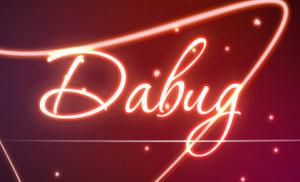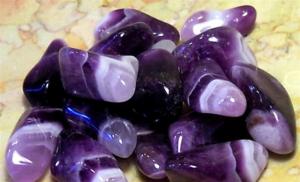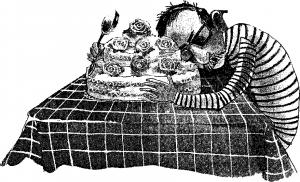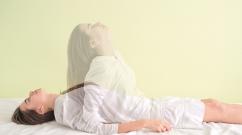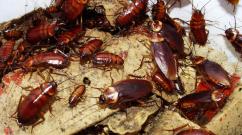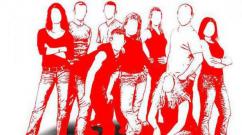Psychostimulant drugs. Stimulants
The effects of drugs in this group develop quickly (within tens of minutes after use) and are highly dependent on the dosage.
A characteristic effect is the ability to weaken the effect of hypnotics and sedatives and reduce appetite. As a rule, they also cause increased cardiac activity, increased blood pressure, stimulate breathing and dilate the bronchi. Most psychomotor stimulants activate the sympathetic system, characteristic feature This is a strong dilation of the pupils.
An overdose causes fussiness, inability to concentrate, talkativeness, the need to move and constantly change position. At an even higher dose, unpleasant physiological effects occur: nausea, dizziness, tachyarrhythmia, dry mouth, chills, etc.
A small dose of psychostimulants can cause, especially in a tired or exhausted person, so-called “paradoxical reactions” - drowsiness, apathy, a feeling of melancholy and a sharp decrease in mood.
Amphetamines (Phenamine, Speed)
Amphetamines are central stimulants nervous system. They do not produce energy like food, but rather use the energy that is already in the body. They are the closest synthetic analogues of the psychostimulant cocaine.
Amphetamines (phenylisopropylamines) are divided into chemical properties to:
u Salts or racemates.
u Dextroamphetamines.
u Methamphetamines (phenylmethylisopropylamines) are the most powerful.
Pure amphetamines are white or slightly creamy, finely crystalline powders that are soluble in water.
Dosage of amphetamines: amphetamines do not become an addiction, but become a habit and its apparent harmlessness leads to the fact that the dose is constantly increasing. Long time its use causes paranoia and real mental disorientation. This is especially true for mephedrine. Amphetamine is a nasty business, whether it comes in pill or powder form, and things can be just as bad, if not worse, than with heroin.
Methamphetamine dosage (single doses). 3-10 mg - mild effect, vigor, increased attention, performance, relieving fatigue and drowsiness. 10-25 mg - average, decreased attention, increased motor activity, pronounced mental agitation, peripheral effects, slight increase in blood pressure and increased heart rate. 25-50 mg - strong, strong mental arousal, physical activity, noticeable increase in blood pressure, tachycardia, duration of action up to 2 days; 50-100 mg - toxic, strong mental arousal, increased anxiety and suspiciousness, strong increase in blood pressure, possible arrhythmia, long-term effect.
Single doses of amphetamines are approximately 2-3 times greater than for methamphetamine.
Feelings when taking amphetamines: After taking amphetamines, an active state occurs within half an hour to an hour. The uplift in mood is combined with a pronounced increase in mental and physical activity, a surge of energy, self-confidence, your strengths and capabilities.
Increased mental and physical performance is confirmed by objective data. The need for rest and sleep disappears. With large doses, active wakefulness lasts 2-3 days, with small doses - 4-8 hours. There are differences in the effects of the drugs. Amphetamines, unlike methamphetamine, cause a paradoxical reaction in ten percent of people in the form of drowsiness, lethargy, and decreased performance. Amphetamines end their effects abruptly; when administered intravenously, a “high” is observed. Methamphetamine has a stronger effect, but is milder and lasts longer.
Amphetamines often end abruptly. Getting up after 6-8 hours is sharply replaced by exhaustion, a feeling of fatigue, and irritability. The effect of methamphetamine passes slowly and almost imperceptibly: after a short 2-3 hour rest, performance and well-being remain high. Frequent use of amphetamines without breaks causes exhaustion of the nervous system and a rapid increase in tolerance.
Sidnocarb
Sidnocarb and phenamine belong to the group of amphetamines in terms of their chemical structure, and in terms of their pharmacological action they belong to psychostimulants. These are drugs that increase mental activity, causing increased clarity of consciousness, brightness of perception, mental performance, preventing drowsiness and falling asleep.
Sidnocarb is widely used to treat various conditions of mental asthenia - weakness, lack of desire to work, drowsiness. If these symptoms are a manifestation of depression, then the use of psychostimulants alone is ineffective, although use in combination with antidepressants may be justified.
In healthy people, it is possible to use sydnocarb in case of need to perform some work in a short time to eliminate the feeling of fatigue and drowsiness, although after this sufficient rest, of course, is necessary, since it is the feeling of fatigue that is eliminated through the use of energy reserves.
Unlike phenamine, sidnocarb has less pronounced stimulation with a single dose, and its gradual increase is observed from dose to dose.
Sidnocarb is usually well tolerated, does not cause dependence or addiction, and its use may increase blood pressure, decrease appetite, and also hyperstimulation phenomena.
Caffeine is found in tea, coffee, mate leaves, as well as guarana and kola nuts. Produced as a by-product of decaffeinated coffee.
Toxic dose: The confirmed lethal dose is 10 g, although there is one documented case of survival after an injection of 24 g. In young children, ingestion of 35 mg/kg may cause moderate toxicity. Children metabolize caffeine very slowly. Theophylline, which may be contained in medications for bronchial asthma, is also dangerous for them.
Overdose symptoms: acute poisoning gives caffeine early symptoms anorexia (lack of appetite), tremor (trembling, including fingers) and anxiety. This is followed by nausea, tachycardia, hypertension and confusion. Severe intoxication can cause delirium tremens, convulsions, supraventricular and ventricular tacharhythmias, hypokalemia and hyperglycemia. Chronic use of high doses of caffeine can lead to nervousness, irritability, anger, persistent tremors, muscle twitching, insomnia and hyperreflexia. When testing blood: concentrations of 1..10 mg/l, concentrations of 80 mg/l are fatal.
Caffeine increases circulating levels fatty acids and this has been shown to promote their oxidation and utilization. For years, caffeine has been used by long-distance runners to enhance fat metabolism. In this regard, it is quite effective for those who are not yet used to it and can help get rid of excess fat. However, caffeine does not suppress appetite, but rather stimulates it. In addition, it increases the secretion of gastric juice, so consuming caffeine without food can lead to gastritis and even peptic ulcers.
How much caffeine is in different products? According to the American National Soft Drinks Association, a 340 ml can of soda contains the following amounts of caffeine (in milligrams):
Variations in the amount of caffeine per 1 cup of coffee or tea are very large, even if the drink is prepared by the same person, with the same equipment, recipe, ingredients, day after day.
Other names are coca, coconut, coke, Si, Tse. Cocaine is an extract from the leaves of a plant native to South America. Erythroxylum Coca
Cocaine belongs to the group of psychomotor drugs. It starts working almost instantly - immediately after the powder hits the nasal mucosa, a “high” occurs - a flash of high. Rising sharply motor activity, the brain thinks “faster,” and there is a general increase in mental and physical strength. The effect is not felt for long - 10..15 minutes, and then depression sets in, which lasts about 30-40 minutes.
The dosage depends on the duration of consumption. The starting dose is two “tracks”.
Long-term use of cocaine causes paranoia, deafness, delirium, indigestion and uncontrollable convulsions. In addition, there is a very high probability of problems with the nasal mucosa or hardening of the veins (depending on the method of administration); sleep phase disturbance (a person stops getting enough sleep). There is an effect on potency.
The most unpleasant side effect of psychostimulants is the “recoil” in the form of a decrease in motivation, performance and mood, which can lead to the formation of psychological dependence if repeated doses of the stimulant are used to overcome these consequences.
Crack, a type of cocaine that is smoked, is called an express drug because of its low price: a dose costs between $10 and $15 on the street. At the same time, crack is the most addictive drug; it is 10 times more dangerous than cocaine. Since it enters the bloodstream through the lungs, it reaches the brain in a matter of seconds, meaning instant addiction. As with cocaine use, a state of euphoria occurs, but it lasts only 5-20 minutes. Then severe depression sets in. The person is caught instantly, the next dose is needed immediately, in a few minutes.
Dissociatives
Dissociative are drugs (of different chemical classes - phencyclidine anesthetics, anticholinergics, etc.) that can cause “separation” (dissociation) of consciousness from the physical body and / or temporarily disrupt the integrity of the psyche, “dispersing” consciousness. The effects of these substances are varied, most often they are unpleasant, but some people consider the experience gained from their use to be unique and very valuable.
Dissociatives, as a rule, do not cause physiological dependence. Psychological dependence is possible, but extremely rare, because The use of drugs of this class for the vast majority of people is usually episodic.
They claim that ketami is an uninteresting and unpleasant drug. For some, it separates the mind from the body too much; for others, ketamine is a powerful and flexible drug whose effects can be easily modulated by changing the dose and environment.
Most agree that ketamine is well tolerated, with little discomfort the next day and a mild “hangover.” The setting plays a critical role in the manifestation of its effects. Most believe that ketamine should not be used without some experience with psychedelic drugs.
After the drug begins to act, fragmentation will occur - the world falls into pieces and begins to rotate, without causing dizziness. The music falls to pieces. With sufficient dosage, at some point ordinary reality and the body disappear. Events beyond this point vary widely, but most speak of alternate spaces, loneliness, visions of the past and future, and strange machines of all kinds.
It is very difficult to communicate under the influence of ketamine because... it is impossible to see and hear others. Some visions are extremely difficult, and some are frightening, but this fear usually does not remain after, so these experiences cannot be called truly terrible. The return to normal reality occurs in reverse order, normal vision is gradually acquired. The effects continue gently for about an hour, gradually subsiding.
Taren is an antidote to OPA (organophosphorus compounds) and is included in the military individual first aid kit.
When used internally (in an unsent state) of 2 capsules, a clear hallucinogenic effect is observed, expressed in confusion, memory loss and the presence of vivid visual hallucinations.
The drug begins to act 20-30 minutes after administration, the effect lasts 4-5 hours. Somatic manifestations: dry mouth and throughout the body, dilated pupils.
Taren is tolerant - to achieve the same effect, the dose must be increased. There is no psychological craving for further use, because there is no euphoria and repetition of sensations.
Psychostimulant drugs- these are substances psychotropic effect, which act by activating the mental and physical condition patient. Thanks to these drugs, the patient’s vitality increases, they forget what fatigue and lack of meaning in life are.
Features of psychostimulants
Psychostimulant drugs are created to alleviate the patient’s condition during this period. They are prescribed by a doctor and taken according to the regimen developed by him. The positive effect for the body is as follows:- help increase physical activity
- normalize muscle tone
- I activate the mood
- improve performance and motivate the patient
- make the thinking process faster
- reduce drowsiness, fatigue
You should know that psychotropic drugs prohibited in our country are cocaine, amphetamine, cathinone, and methamphetamine.
Side effects
With uncontrolled and long-term use of psychostimulants, the following side effects may occur:- lack of sleep
- overexcited state
- allergy
- rapid heartbeat
- pain in the sternum
- arrhythmia
- hypertension
- condition of hypochondria
- anxiety and panic
- depression
- migraine
- mental disorder
In fact, the list of side effects is much longer, and each of them is harmful to the body.
Psychostimulant drugs– medications, the use of which must be monitored by the attending physician, since non-compliance with the regimen or uncontrolled use is fraught with health problems.
Psychostimulants are a group of psychotropic drugs that increase mental and physical performance, improve the ability to perceive external stimuli (sharpen vision, hearing, etc., speed up responses), improve mood, relieve fatigue, invigorate and temporarily reduce the need for sleep.
Amphetamines (amphetamine, dextroamphetamine and methamphetamine) were first synthesized in late XIX V. Their medical use began in the 20s of the XX century. and has been associated with the treatment of cold symptoms, obesity, narcolepsy, and attention deficit hyperactivity disorder in children. These drugs were used as stimulants during World War II on both sides of the front. In America, it was prescribed to treat heroin addiction until the 1960s, which led to a surge in amphetamine abuse. In the USSR, amphetamines were produced starting in the 40s; they were used in the medical field to a limited extent and were inaccessible. Currently, amphetamines are practically not used in clinical practice due to their pronounced side effects And high risk development of drug dependence. According to the World Health Organization classification, amphetamines are classified as narcotic drugs.
Classification of psychostimulants.
1) Amphetamines:
Arylalkylamine (phenylalkylamine) derivatives: amphetamine.
Phenylalkylpiperidine derivatives: methylphenidate, Pemoline (not registered in Russia).
2) Sydnone imines (phenylalkyl sydnone imine derivatives): mesocarb, feprosidnine.
3) Methylxanthine derivatives: caffeine.
4) Drugs of other pharmacological groups with a psychostimulating effect: salbutiamine, ethylthiobenzimidazole hydrobromide (Bemitil), deanol aceglumate, meclofenoxate, Semax.
The psychostimulant effect of amphetamines is based on the release of norepinephrine and dopamine from the vesicular pool of presynaptic nerve endings in the central nervous system, as well as inhibition of their reuptake. Amphetamines inhibit catechol-o-methyltransferase, an enzyme that catalyzes the breakdown of catecholamines at adrenergic synapses. These mechanisms determine not only the psychostimulating, but also the peripheral adrenomimetic effect with various vegetative manifestations (increased blood pressure, tachycardia, extrasystole, etc.).
Caffeine competitively inhibits the activity of phosphodiesterases, promoting the intracellular accumulation of cAMP and cGMP and activation various types intracellular metabolism in the central nervous system, heart, smooth muscle organs, adipose tissue, skeletal muscles; stabilizes the transmission of nervous excitation in dopaminergic, noradrenergic and cholinergic synapses of the cortex, hypothalamus and medulla oblongata. The mechanism of action of caffeine involves competition for receptors with adenosine, which limits the spread of excitation in the central nervous system.
The psychostimulating effect is manifested by a decrease in lethargy, drowsiness, a feeling of cheerfulness, and an increase in physical and intellectual performance. This effect is most pronounced in phenylalkylamine derivatives (amphetamine), less so in methylphenidate, mesocarb, and even weaker in caffeine. Psychostimulants from the group of arylalkylamine derivatives also have a moderate antidepressant effect and reduce appetite.
Peripheral effects are most pronounced in amphetamine, to a lesser extent in methylphenidate, caffeine, and slightly in mesocarb. Amphetamine and caffeine stimulate cardiac activity (increased heart rate, increased heart contractions). Amphetamine causes peripheral vasoconstriction. The effect of caffeine on blood vessels and blood pressure is ambiguous: it has a vasodilating effect on the vessels of skeletal muscles, heart, kidneys, skin and a vasoconstrictor effect on the vessels of the brain and organs abdominal cavity. Caffeine increases the tone of venous vessels and has a diuretic effect. Amphetamine and caffeine have a bronchodilator effect.
The most typical side effects of psychostimulants are increased excitability, anxiety, sleep disturbance, nausea, tachycardia, arrhythmia, and increased blood pressure. While taking amphetamines and sydnonimines, a decrease in appetite, exacerbation of delusions and hallucinations are also possible; with long-term use of amphetamine - the development of drug dependence, severe neuropsychiatric disorders, schizophrenia-like psychosis.
Psychostimulants are prescribed orally (with the exception of sodium benzoate caffeine), are generally well absorbed from the gastrointestinal tract and penetrate the BBB. To prevent sleep disturbances, take in the first half of the day (before 15:00).
Psychostimulants reduce the effect of sedatives and enhance the effect of drugs with central nervous system stimulating properties. When used simultaneously with antipsychotics, exacerbation of schizophrenia is possible. Psychostimulants cannot be combined with MAO inhibitors.
The main indications for the use of psychostimulants are a decrease in physical and mental performance, drowsiness, lethargy, lethargy, apathy in asthenic conditions of various origins, depression, incl. depression with symptoms of social alienation or psychomotor retardation in elderly patients, the presence of severe somatic pathology, chronic alcoholism, narcolepsy. These drugs reduce the side effects of tranquilizers, antipsychotics, and sleeping pills. They are intended for a short-term increase in mental and physical performance in healthy individuals in extreme, stressful situations (caffeine, mesocarb are used, and amphetamine is used for a short time in exceptional situations). For attention deficit hyperactivity disorder in children (in the USA and some Western countries) use methylphenidate, amphetamine.
Psychostimulants are contraindicated in cases of hypersensitivity, agitation, anxiety, sleep disorders, arterial hypertension, atherosclerosis, organic diseases cardiovascular system. Amphetamine is contraindicated in case of liver failure, and caffeine in case of glaucoma.
In domestic medical practice, mesocarb and caffeine are mainly used (including in the composition combination drugs).
Drugs
Drugs - 162 ; Trade names - 11 ; Active ingredients - 4
| Active ingredient | Trade names |
Psychostimulants — drugs that increase physical and mental activity. Psychostimulants have a direct effect on the sympathomimetic receptors of the postsynaptic membrane and facilitate the presynaptic release of transmitters. Amphetamines (phenamine, methylphenidate) stimulate dopamine receptors, and sydnonimines (mesocarb, feprosidnine) have predominantly noradrenergic activity.
Psychostimulants are prescribed to people with severe forms of asthenic and apathetic conditions, and narcolepsy.When taking psychostimulants, it is possible to develop physical and mental drug dependence. Based on this, the duration of continuous treatment should not exceed 3-4 weeks. It should also be taken into account that psychostimulants, including mesocarb, in patients with psychotic disorders lead to an exacerbation of the condition.
Based on their chemical composition, psychostimulants are divided into:
- Xanthine derivatives - Caffeine, caffeine sodium benzoate
- Phenylalkylamine derivatives - Amphetamine sulfate (phenamine)
- Phenylalkyl sydnonimine derivatives - Sydnocarb, sydnophen
- Piperidine derivatives Methylphenidate - (Meridil, Ritalin, Centedrine)
— ELIXIR OF YOUTH AND HEALTH
— NATURAL CLEANSING OF THE BODY
Psychostimulants list:
- Abixa
- Almer
- Bilobil
- Bilobil intensity
- Bilobil forte
- Velaxin
- Gelarium hypericum
- Giloba
- Deprivox
- Zoloft
- Cavinton solution for infusion
- Cavinton tablets
- Cavinton forte
- Calcium hopantenate
- Kindinorm
- Cortexin
- Lutsetam
- Melitor
- Meme
- Memos
- Memoplant
- Memoplant forte
- Memoria
- Miaser
- Mirtazapine hexal
- Mirtastadin
- Neuro-norm
- Nivalin
- Noobut ic
- Noofen
- Noofen 100
- Noofen 500
- Olatropil
- Omaron
- Pantogam
- Paroxin
- Pramistar
- Rexetine
- Saroten
- Saroten retard
- Surlift
- Somazina
- Stimuloton
- Strattera
- Tanakan
- Thiocetam
- Thiocetam forte
- Fezam
- Phenibut
- Fluxen
- Cerakson
- Cerebrocurin
- Cerebrolysin
- Tseregin
- Cipralex
- Cipramil
- Zita sandoz
- Evrizam
- Ezopram
- Entrop
- Encephabol
- Esprital
- Coaxil
- Piracetam
- Amixid
- Clofranil
- Amitriptyline (solution for intramuscular administration)
- Pantocalcin
- Pyratropil
- Apo-fluoxetine
- Vinpocetine
- Melipramine
- Velafax
- Citalorin
- Pyrazidol
- Vinpocetine-acry
- Phenotropil
- Trittico
- Fevarin
- Akatinol memantine
- Ephevelon
- Deprefault
- Mirzaten
Psychostimulants when interacting with others medicines may exhibit the following properties:
- Psychostimulants should not be prescribed simultaneously with antidepressants, adrenergic agonists, ephedrine, since the risk of a sharp rise in blood pressure increases.
- When psychostimulants are combined with tricyclic antidepressants (amitriptyline, imipramine, etc.), sympathomimetic effects may be enhanced, which is manifested by the development of cardiac arrhythmias, tachycardia, arterial hypertension and hyperthermia. Monoamine oxidase (MAO) inhibitors, including nialamide, furazolidone, procarbazine, selegiline, can enhance cardiac stimulation and pressor effects of amphetamines. Therefore, phenamine and related drugs should not be prescribed earlier than 14 days after discontinuation of MAO inhibitors.
- The use of sympathomimetics and levodopa together with phenylalkylamines and their analogues can lead to the development of severe psychomotor agitation, insomnia, convulsive syndrome, as well as an increased effect of sympathomimetics on blood vessels and the heart.
- You cannot combine psychostimulants with M-anticholinergic blockers (atropine, platyphylline, metacin and others), because the latter, by inhibiting parasympathetic influences, contribute to the predominance of sympathetic ones, which in turn are enhanced under the influence of psychostimulants. As a result, it is possible to potentiate the side effects of the latter, in particular from the cardiovascular system.
- When phenamine is prescribed simultaneously with beta-blockers, the likelihood of developing excessive bradycardia and atrioventricular block increases. When combined with cardiac glycosides, the risk of developing arrhythmias increases.
- Amphetamines may potentiate the cardiac side effects of thyroid hormones. The risk of developing coronary insufficiency increases. Large doses of propoxyphene can enhance the central stimulant effect of amphetamines, which can lead to fatal seizures.
- Inhalation anesthetics (fluorotane and, to a lesser extent, enflurane) may increase the sensitivity of the myocardium to the action of sympathomimetic agents, including phenamine, thereby increasing the risk of developing severe ventricular arrhythmias.
- Agents that alkalinize urine (sodium bicarbonate, carbonic anhydrase inhibitor diacarb) enhance the effect of phenamine due to slower elimination from the body. Against the background of ammonium chloride and other drugs that acidify urine, the effects of phenamine, on the contrary, are weakened due to accelerated excretion from the body.
- The combination of caffeine with other xanthine derivatives (aminophylline, theophylline, theobromine), as well as with bronchodilators from the group of adrenergic agonists, may increase the risk of side effects. Cimetidine, macrolide antibiotics, ciprofloxacin, enoxacin, oral contraceptives, disulfiram inhibit the metabolism of caffeine and increase its overall clearance.
The antiarrhythmic drug mexiletine can significantly reduce the excretion of caffeine and enhance its stimulating effects.
Psychostimulants and nootropics
CENTRAL NERVOUS SYSTEM STIMULANTS
Stimulants are conventionally divided into 4 large groups:
1. PSYCHOSTIMULANTS
a) psychomotor: caffeine, phenamine, sydnocarb.
b) psychometabolic (nootropics): nootropil (piracetam), Cerebrolysin, Gamalon, etc.
2. ANALEPTICA
a) direct action: bemegride, etimizol, etc.
b) reflex action: cititon, etc.
c) mixed action: cordiamine, etc.
3. SPINAL CORD STIMULANTS: strychnine, securenine, etc.
4. GENERAL TONIZERS (ADAPTOGENS)
A) plant origin: preparations of ginseng, eleutherococcus, aralia, golden root, maral root, Bittner's balm, etc.
b) animal origin: pantocrine, etc.
Psychostimulants (or psychotonics, psychoanaleptics, psychomotor stimulants) increase mood, the ability to perceive external stimuli, and psychomotor activity. They reduce the feeling of fatigue, increase physical and mental performance (especially when tired), and temporarily reduce the need for sleep (drugs that invigorate a tired body are called “doping” - from English to dope - to give drugs).
Unlike CNS depressants, stimulants are less important because they lack selectivity of action. In addition, stimulation of the central nervous system is accompanied by its subsequent inhibition.
CLASSIFICATION OF PSYCHOSTIMULANTS
1) Drugs acting directly on the central nervous system:
a) stimulating primarily the cerebral cortex (xanthine alkaloids, phenamine, sydnocarb, methylphenamine, meridol, etc.);
b) stimulating mainly the medulla oblongata (corazol, cordiamine, bemegride, camphor, carbon dioxide);
c) stimulating primarily the spinal cord (strychnine).
2) Drugs that act on the central nervous system reflexively (lobeline, veratrum, nicotine).
It should be remembered that this division is conditional and when used in large doses they can stimulate the central nervous system as a whole.
A typical representative of psychostimulants is PHENAMIN(amphetamine sulfate; table of 0.005; drops in the nose, in the eye 1% solution). Chemically it is a phenylalkylamine, i.e. it is similar in structure to adrenaline and norepinephrine.
THE MECHANISM OF ACTION is associated with the ability to release NORADRENALINE and DOPAMINE from presynaptic endings. In addition, phenamine reduces the reuptake of norepinephrine and dopamine.
Phenamine stimulates the ascending activating reticular formation of the brain stem.
INFLUENCE ON THE CNS: Powerful stimulant of the central nervous system. It increases mental and physical performance, improves mood, causes euphoria, insomnia, tremors, and anxiety. In therapeutic doses, it has an awakening effect, eliminates fatigue, increases physical abilities. Stimulates the respiratory center and in this regard acts as an analeptic.
EFFECT ON THE CARDIOVASCULAR SYSTEM: Increases both systolic and diastolic blood pressure. Tachyphylaxis is known in relation to the hypertensive effect of phenamine.
SMOOTH MUSCLE: Phenamine increases sphincter tone bladder and relaxes the muscles of the bronchi, but only at high doses. Phenamine reduces appetite (on the hypothalamus), has some anticonvulsant effect (for Petit mal).
ADVERSE REACTIONS
Undesirable effect is stimulation of the sympathetic nervous system (tachycardia, anxiety, headache, tremor, agitation, confusion, paranoid psychosis, angina attacks).
The drug causes drug dependence, mainly mental, and accumulates. Tolerance may develop.
INDICATIONS FOR USE:
1) neurotic subdepression;
2) for narcolepsy, for catalepsy, to prevent pathological drowsiness (narcolepsy);
3) obesity;
4) as an analeptic for poisoning with narcotic analgesics.
Pyridrol and Meridol are similar to phenamine in their effect on the central nervous system. They do not have unwanted peripheral adrenomimetic effects.
In addition to phenamine, the group of phenylalkyl synnonimines also includes the active psychostimulant sydnocarb (mesocarb). This is an original domestic drug, slightly different in chemical structure from phenamine. In Russian clinics, sydnocarb is currently the main psychostimulant. Compared to phenamine, it is significantly less toxic and does not exhibit a pronounced peripheral sympathomimetic effect. The psychostimulating effect develops gradually, but it is longer lasting and is not accompanied by euphoria and motor excitement. As a rule, there is no tachycardia and a sharp increase in blood pressure. After the effect of the drug, the patient does not experience general weakness and drowsiness. The drug is used for different types asthenia, occurring with lethargy and lethargy, with apathy, decreased performance, hypochondria, and increased drowsiness.
The drug is used as a psychostimulant for asthenic and neurasthenic disorders in patients who have suffered intoxication, infection and brain injury, and in some forms of psychosis.
In addition, sydnocarb is used to relieve asthenic manifestations after the use of neuroleptics, tranquilizers, as well as in the treatment of patients with alcoholism (relief of asthenoneurotic reactions during the period of “alcohol withdrawal”, to reduce the phenomenon of withdrawal).
Sidnocarb is also used in the treatment of children with mental retardation, accompanied by adynamia, aspontaneity, lethargy, lethargy, and asthenia.
Side effects. In case of an overdose, increased irritability, anxiety, and decreased appetite are possible. In patients with psychosis, delusions and hallucinations may increase. Sometimes there is a moderate rise in blood pressure.
The drug is available in tablets of 0.005; 0.01; 0.025.
The industry also produces the combined drug Sidnogluton, containing 0.025 sydnocarb and 0.1 glutamic acid. The latter potentiates the psychostimulating effect of sydnocarb.
Drugs that primarily stimulate the cerebral cortex include: XANTHINE ALKALOIDS(purine derivatives; metalxanthines), a typical representative of which is CAFFEINE.
Xanthine alkaloids are found in several plants grown throughout the world. Three natural xanthine alkaloids are found in these plants: caffeine, theobromine, theophylline, which are purine bases. When heated with nitric acid, they form a yellow precipitate, hence the term xanthines (Greek - xanthos - yellow). Caffeine is found in tea leaves (Thea sinensis - 2%), coffee seeds (Coffea arabica - 1-2%), cocoa seeds (Theobroma acuminata), etc.
PHARMACOLOGICAL EFFECTS: Caffeine has the most pronounced effect on the central nervous system, followed by theophylline and theobromine. The effect of caffeine on higher nervous activity depends on the dose and type of nervous system. In small doses, caffeine increases the activity of the cortex, in large doses it inhibits it. In small doses, it helps speed up the thinking process and makes it clearer, brings clarity to the train of thought, reduces drowsiness, fatigue and gives the ability to perform intellectually complex tasks. It reduces reaction time, increases motor activity and strengthens conditioned reflexes. These effects can be observed after 1-2 cups of coffee. One cup contains about 1500 mg of caffeine.
Higher doses cause increased excitability, confusion, insomnia, headache, and tremors. Theophylline in large doses can even cause seizures.
BRAIN OBLUNDATURE. High doses directly stimulate the respiratory, vasomotor and vagus nerve centers. This leads to increased breathing (faster and deeper), increased blood pressure, and tachycardia. True, in large doses, tachycardia and arrhythmias occur, i.e. its peripheral effect predominates (cardiac output increases).
SPINAL CORD. Very large doses increase reflex excitability of the spinal cord and can lead to clonic convulsions.
BLOOD VESSELS: Xanthines have a myotropic effect on blood vessels, but this vasodilatory effect is short-lived. It should not be used to treat peripheral vascular disease.
Xanthines have ambiguous effects on different vascular areas. The latter helps with migraines. Caffeine has a weak myotropic antispasmodic effect on smooth muscle organs (bronchi, biliary tract). It has great value for the clinic. It has long been known that theophylline eliminates bronchospasm during anaphylactic shock, stimulates skeletal muscles, increases their metabolism, eliminates their fatigue.
Caffeine increases BASIC METABOLISM. Increases glycogenolysis, causing hyperglycemia. Increases lipolysis, releases adrenaline from the adrenal medulla.
DIURESIS: Xanthines increase diuresis. The most powerful in this regard is theophylline, followed by theobromine and caffeine.
Xanthines increase the volume, acidity and pepsin content of gastric juice.
THE MECHANISM OF ACTION is associated with two directions:
1) xanthines inhibit cyclic nucleotide phosphodiesterase and prevent the transition of cAMP to 5-AMP;
2) cause changes in the distribution of calcium at the level of intracellular processes.
ADVERSE REACTIONS
1) Confusion, tremor, headache, insomnia. Ringing in the ears, headache, tachycardia, shortness of breath, arrhythmias. For these reactions, sedatives should be prescribed.
2) Xanthines are contraindicated in patients peptic ulcer and gastritis.
3) To xanthines, addiction develops, to a greater extent - mental dependence, which, however, is not dangerous.
INDICATIONS FOR USE
To stimulate mental activity. With fatigue, with symptoms of asthenia, with migraine, hypotension. For absent-mindedness, impaired attention, exhaustion.
Caffeine is part of many combination drugs with non-narcotic and narcotic analgesics: citramon, panadol extra, solpadeine, as well as with ergot alkaloids - the drug caffeamine.
